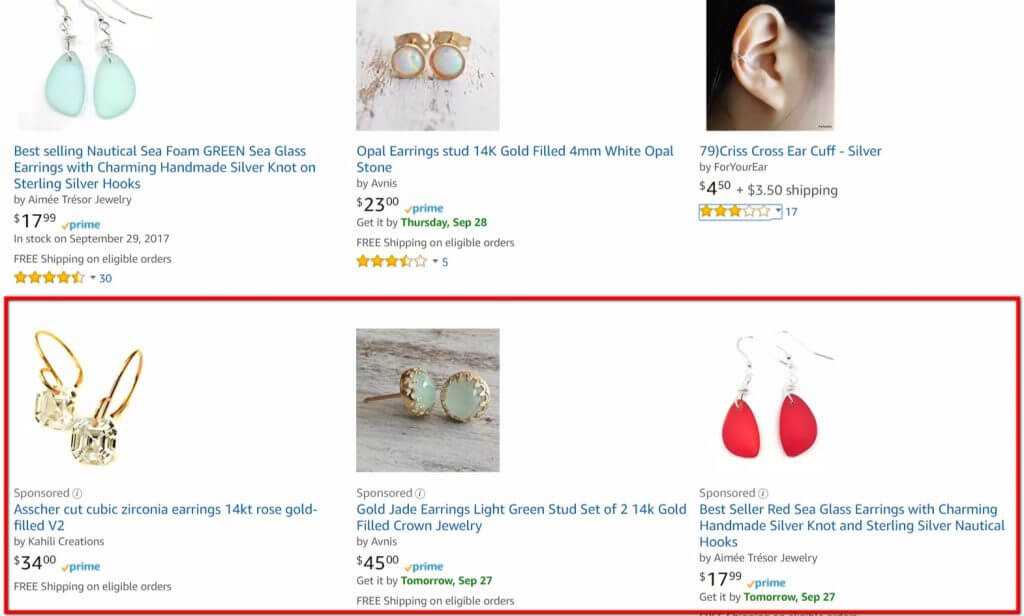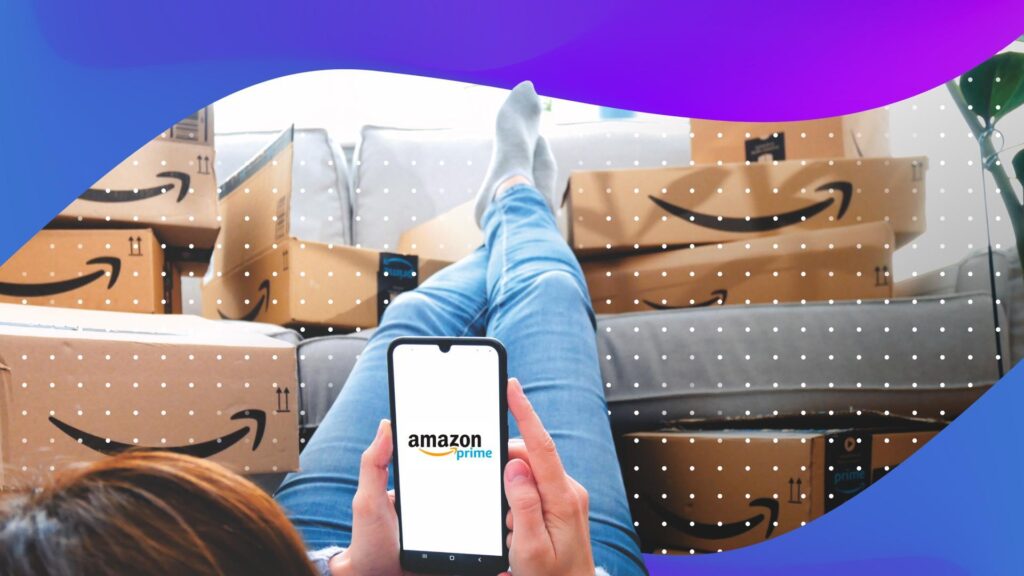“Etsy” is a word that’s become synonymous with crafts and handmade goods.
Just last year, the company watched 30 million shoppers spend over $2.8 billion on the platform.
Of course, then Amazon decided to jump in. In the fall of 2015, the industry titan launched Handmade at Amazon. The website–launched with 5,000 sellers and 80,000 unique items–has shown no sign of slowing down.
Amazon claims to differentiate itself by the quality of genuine handmade goods as opposed to “other sites” that offer crafts that are mass produced.
With roughly ten times (nearly 300 million) the customers upon which to draw and fewer sellers than its primary competitor Etsy, Amazon Handmade appears to offer unparalleled exposure and opportunity for expanding retailers.
But is it enough to overtake Etsy’s popularity? Well, it’s worth debating.
Table of Contents
- The Contenders
- Etsy Seller Fees
- Product Categories
- Advertising
- Fulfillment & Customer Service
- Getting Started
- The Final Verdict
The Contenders
Etsy is a well-trafficked platform with plenty of users looking to buy. For burgeoning businesses wanting to expand their profile, it is a straightforward, streamlined alternative or addition to an independent website. Etsy offers a combination of ease and customization for sellers with room for growth going forward.
Amazon at its core is known for fast delivery, low prices, and a being bottomless reservoir of inventory. Some users find these very principles incompatible with the handmade movement, as Amazon has excelled in large part due to its convenience. A customer can log in and find and buy almost anything imaginable and have out on their doorstep within 48 hours. If one product is sold out, a buyer can find something similar enough in an instant.
Etsy Seller Fees
Etsy Seller Fees
Etsy seller fees include a:
- Transaction fee (5%)
- Subscription fee (varies based on tier)
- Shipping fee (Etsy shipping labels, USPS labels, FedEx labels, or Canada post labels)
- In-person selling fee (optional, if selling products in person using Square)
- Advertising and promotional fee (optional, if advertising with Promoted Listings, Google Shopping ads, and Targeted Offers)
For businesses that are new to the platform, Etsy offers the first 40 listings for free.
Etsy exact $.20 to list an item for four months and a 5% transaction fee, which was formerly 3.5% before an increase in July 2018. That same month, Etsy also announced the arrival of three separate tiers for sellers:
Starting in mid-July, sellers looking to jump-start their growth can opt into Etsy Plus for an introductory rate of $10 per month. In 2019, Etsy also plans to roll out Etsy Premium, which will be geared towards larger, more established creative businesses. Sellers who do not opt into Etsy Plus or Etsy Premium will have access to the same tools and services that are currently available on Etsy without an additional monthly fee as part of Etsy Standard.
All tiers are listed below:

Etsy Payment Methods
Etsy has two accepted primary methods of payment: Paypal and their own system Direct Checkout. Paypal has a flat-rate of $.30 per transaction in addition to 2.7% of money collected (item price and shipping). Paypal subtracts these fees and adds the rest to the vendor’s Paypal balance, which can then be transferred within a day to a checking or savings account.
Direct Checkout takes a flat $.30 for each transaction plus 3% of the price with shipping. Like Paypal Direct Checkout removes fees and then places the rest into a seller’s shop payment account. Direct Checkout then deposits weekly into the seller’s preferred bank account, though vendor’s can request quicker payment. Additionally, businesses can choose to accept personal checks and money orders.
Unlike competitors (e.g. Amazon Handmade) Etsy releases funds immediately. This will help expedite the cash flow of businesses whose products require a longer production duration. Etsy sends shop owners a bill at the end of every month with the fees that are owed, and sellers have until the 15th of the next month to pay.
Handmade at Amazon Seller Fees
Handmade at Amazon is an expensive platform for sellers. While there are no listing fees, merely enrolling in the required professional membership may cost $40 per month.
Vendors who sell fewer than 40 non-handmade items elsewhere on Amazon can apply to have this fee waived. If a business sells more than that, they are subject to the monthly fee. Regardless, Amazon takes 15% or $1, whichever is greater, from every transaction vendors make. This 15% referral fee also applies to shipping charges.

For reference, Etsy, its primary competitor only has a 3.5% transaction fee that does not include shipping costs.
Verdict: Although Handmade at Amazon does not enact a payment processing fee like Etsy, its fees add up to more than double that of the latter. On a single $10 sale with $5 shipping this could mean the difference between being paid $14.35 (Etsy) and $12.75 (Handmade). And this is without the additional $40 a month many sellers are forced to pay just to be able to do business on Handmade.
Product Categories
Etsy Product Categories
Etsy features both handmade and vintage product sections with the latter comprising only items over 20 years old. Next products are divided into 15 top level categories, each with increasingly specific subcategories. The top level categories are:
- Jewelry
- Craft Supplies & Tools
- Home & Living
- Art & Collectibles
- Accessories
- Clothing
- Paper Goods & Party Supplies
- Bath & Beauty
- Bags & Purses
- Weddings
- Toys & Games
- Books, Movies & Music
- Electronics & Accessories
- Pet Supplies
- Shoes

Products are organized differently for sellers than buyers. Sellers are encouraged to describe items in as much detail as possible, whereas Etsy does not want buyers to have to narrow their searches to smaller subcategories to find what they are looking for.
This means if subcategories do not have enough listings they will not show up on the buyer side. However, items will still show up under the main product category.
Amazon Handmade Categories
Handmade at Amazon has far fewer categories than rival Etsy, making it much simpler to place products. Items are divided into eight categories:
- Accessories
- Baby
- Beauty & Grooming
- Home
- Jewelry
- Pet Supplies
- Sports
- Toys & Games

The Home section is the most robust, encompassing Kitchen & Dining, Patio, Lawn & Garden, Art, Bath, Bedding, Furniture, Home Décor, Lighting, Storage & Organization, Party Supplies, and Stationery.
Verdict: If the contest is comprehensiveness of product categories, Etsy wins by a landslide. However, there is a distinction between the products that perform well–and according to one top custom sticker seller, “OnceMoreWithLove”, Etsy favors products with a higher AOV:
Etsy is a great market for exposure. There are many shoppers so the traffic from both existing and new buyers is excellent. On the other hand, I feel that Etsy is geared towards higher-value handmade pieces such as jewelry, furniture, decor, clothing. This is evident as these are the items that are typically showcased on their homepage – not stickers. Since my shop is a high-volume, low-priced shop selling stickers, the fee margin for our items are much higher compared to, say, a piece of jewelry over $200. So while this con exists for me, I must note that this con of selling on Etsy is quite personal to my type of shop and may not apply to other handmade shops with higher-priced items.
At the end of the day, there are some products that will perform well on Etsy, and others that won’t. But if you sell products with a high AOV, it’s worth looking into Etsy.
Advertising
Etsy Advertising
Etsy advertising fees are based on a cost-per-click (CPC) model, meaning that sellers are charged for the clicks their ad receives and not simply when it is displayed.
Etsy currently offers two forms of paid advertising:
- Promoted Listings
- Google shopping ads
Both of these can be managed through the advertising dashboard.
Promoted listings show up on the top of the user’s search results on Etsy’s mobile app and webpage based on relevancy, listing quality, and price of advertisement. Sellers may opt to feature some or all of their items as Promoted Listings.

The price of advertisement varies for promoted listings as ads are auctioned off in a bid system in which sellers enter the maximum amount they are willing to pay Etsy if a buyer clicks on their listing. As such, their prices fluctuate depending on the demand.
Sellers can choose to manage their bidding manually or automatically. If they do the latter, vendors may set a max-CPC in which the auto-bidding system will not place a higher bid.
Paid Google Shopping advertisements also use an auction system to dictate the cost and placement of listings. Sellers enter a daily advertising budget (no fewer than $1), though Google optimizes results on a monthly basis.

This means on any given day sellers may exceed their daily budget by up to 20% so long as over the course of a month they maintain their budget. With Google Shopping advertisements all listings will be promoted by default, however, sellers can remove listings from promotion at any time using the advertising dashboard.
Etsy also offers third-party promotion of listings referred to as Shopping Engine Ads. Users can enable this feature on their accounts, which allows Etsy to promote their listings on other sites to prospective customers who may not be using Etsy to search. These websites include Bing, ShopStyle, Polyvore, and Facebook, and it’s currently free for sellers.
Outside of ads, Etsy shop owners can utilize social media to promote their goods–Etsy has an active Instagram account and following, and they regularly feature artisans.

Marketing on Handmade at Amazon
Just like its mother platform, Handmade at Amazon allows sellers to engage in paid advertising with the following:
- Sponsored Products
- Amazon Marketing Services (AMS)
Sponsored Products, their pay-per-click (PPC) marketing solution, allows sellers to pick which of their products to promote as well as select keywords to market them.

Alternatively, users can enable Amazon to target advertisements on their behalf. These promoted listings by AMS are optimized for both online and mobile use and are placed toward the top of search results and on product pages.
Because their advertising operates on a PPC model there are no monthly fees. Instead, sellers place bids on the maximum amount they are willing to pay if a customer clicks on their ad. The higher the bid the better the placement of the listing. Sellers then enter the maximum daily amount they are willing to spend on advertising.
The business will receive that amount of clicks multiplied by the days of that particular calendar month. Vendors are charged based on the number of clicks their items receive and are deducted from their selling account balance.
Like Etsy, Amazon Handmade has an active Instagram account where users may choose to hashtag their products photos with #HandmadeAtAmazon. The platform’s official Instagram is very active and regularly features products for sale on their feed.

Verdict: Ads on both platforms can be powerful for sellers attempting to differentiate themselves from the competition. But ads aren’t everything. As always, excellent custom service and product photography are key to generating sales–and Handmade at Amazon offers less in the way of customization than some of its counterparts.
Fulfillment & Customer Service
Shipping & Customer Service With Etsy
Customer service is extremely important. Sellers should respond quickly and sympathetically to all inquiries, concern, and feedback, and strive to ship items as soon as possible. This helps to develop trust between buyers and vendors.
Sellers receive a score based on the average star rating of reviews left over the past twelve months, so it is important for shop owners to engage in a courteous and professional manner with customers to ensure their seller reviews are positive.
At the end of the day, the best advertising a vendor can get is the free publicity from vocal supporters who will engage in repeat business and advocate on a seller’s behalf to new customers.
Vendors should also focus on developing a clear brand that helps them stand out to customers. Top sellers regularly send email newsletters, unique packaging, hand-written thank-you notes, and business cards with their packages.
Shipping & Customer Service With Amazon Handmade
With Amazon Handmade, vendors can manage shipping options. They can arrange to ship by weight or have fees scaled to the total cost of the order. Sellers can also choose which regions they are willing to ship to and how fast they are able to do so. However, it’s clear Amazon Handmade is the child of Amazon (and has its values):

While business owners are free to ship items themselves, for those with non-custom inventory that is ready-to-ship Amazon recommends signing up for Fulfillment by Amazon (FBA). This permits Amazon to keep stock of inventory and makes items eligible for 2-day delivery and Amazon Prime. Once this is sorted out sellers can begin listing goods.
Keeping track of orders and inventory is also simple. Handmade at Amazon sends emails each time a sale is made, and offers an Amazon Seller App for mobile alerts. And the inventory system allows users to readily edit and delete listings as needed.
One crucial note: Amazon restricts sellers from including any marketing and promotional materials in shipped packages.
This severely limits the ability for small businesses to foster unique brand identification beyond a storefront or “Featured Artisan” spot as seen below:

Furthermore, Amazon prohibits sellers from linking back to their own independent websites, contacting buyers outside of the ecommerce platform, or cultivating customer email lists for future newsletters.
Verdict: Customer trust in the brand name of Amazon is huge–so if you’re a seller that doesn’t care as much about shop owner independence or brand building, Amazon Handmade might just be the right place to start. Otherwise, Etsy has a huge advantage here with personal brand promotion.
Getting Started
Setup for Selling on Etsy
In order to sell on Etsy, vendors must first become registered members. Once this is done, sellers can open an Etsy shop, name their Etsy store, set preferences such as language and currency, and start listing items.

Setup for Selling on Amazon Handmade
Unlike many similar websites, businesses cannot simply open an account and begin selling immediately.
Handmade at Amazon features a rather strict but pretty painless application process. Prospective sellers must answer essay-length questions about themselves and their products in addition to supplying other information. Additionally, they are required to submit product photos. Acceptance onto the site can take over a month.

Once admitted, users are invited to register and create their artisan profile, which is essentially a store front. This page may consists of photographs of the maker and their workspace, description of the craft process, information on custom orders, and other tidbits.
Conclusion: Amazon Won’t Kill Etsy, But it Will Draw More Sellers In
By selling products on Amazon Handmade, businesses risk brand erosion and becoming another commodity rather than a distinct, vibrant entity. Etsy is the place to go if you’re hoping to build a solid brand and following.
However, it would be foolish to dismiss the ubiquity and reach of Amazon Handmade. While it may not offer the brand distinction, Handmade at Amazon provides retailers with yet another audience to expand their business–and a business name that’s nearly impossible to beat.
So will Handmade at Amazon kill Etsy? Not likely.
But will Etsy sellers start feeling pressure to sell on Amazon Handmade? Well, just ask any remaining brick and mortar retailer in the US.
Editor’s Note 10/24/2018: Post has been edited for updated for accuracy.
You Might Be Interested In












